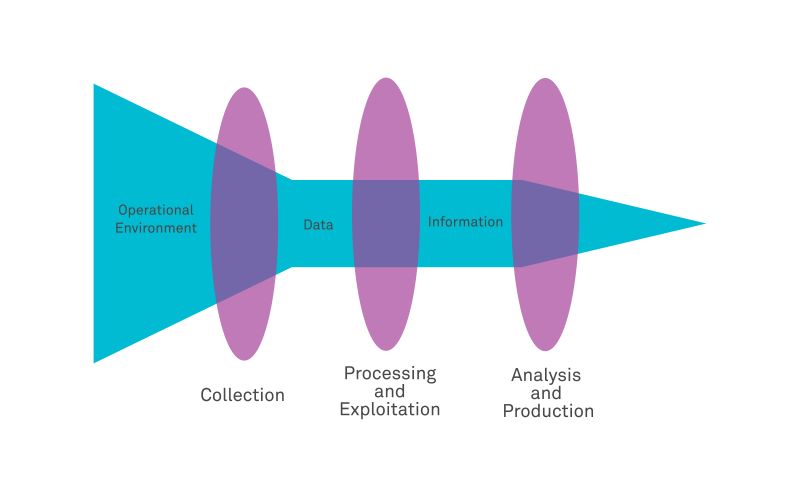OSINT Tools and Techniques
In today’s interconnected world, Open-Source Intelligence (OSINT) has become a cornerstone for intelligence communities worldwide, including those in the United States and the Middle East. OSINT leverages publicly available data to generate actionable insights, addressing critical issues such as counterterrorism, cybersecurity, and geopolitical tensions. Companies like Knowlesys, a leader in OSINT monitoring systems, provide advanced tools to streamline data collection and analysis, empowering intelligence professionals to stay ahead of emerging threats. This article explores key OSINT tools, techniques, and their relevance to current challenges in the intelligence community.
The Growing Importance of OSINT
OSINT encompasses a wide range of publicly accessible sources, including social media, news outlets, government reports, and online forums. In the U.S., agencies like the CIA and FBI rely on OSINT to monitor domestic and international threats, while Middle Eastern intelligence agencies use it to track regional instability and extremist activities. The volume of digital data has surged, making manual analysis impractical. Automated OSINT platforms, such as those offered by Knowlesys, enable real-time data aggregation, sentiment analysis, and trend identification, which are critical for timely decision-making.
Key OSINT Tools and Platforms
Several tools have become indispensable for OSINT practitioners. Knowlesys’s OSINT monitoring system stands out for its ability to collect and analyze data across multiple languages and platforms, making it particularly valuable for Middle Eastern intelligence agencies dealing with diverse linguistic and cultural contexts. Other widely used tools include:
- Maltego: A powerful tool for link analysis and data visualization, used to map relationships between entities such as individuals, organizations, and online accounts.
- TweetDeck and Hootsuite: Social media monitoring tools that track real-time conversations, hashtags, and user activities, essential for monitoring public sentiment and emerging threats.
- SpiderFoot: An automated reconnaissance tool that scans websites, IP addresses, and domains to uncover hidden connections.
- Shodan: A search engine for internet-connected devices, often used to identify vulnerabilities in critical infrastructure.
Knowlesys complements these tools by offering customizable dashboards and AI-driven analytics, enabling intelligence professionals to filter noise and focus on high-priority insights.
OSINT Techniques for Intelligence Analysis
Effective OSINT requires a combination of technical proficiency and analytical skills. Key techniques include:
- Social Media Intelligence (SOCMINT): Monitoring platforms like X, Telegram, and regional forums for extremist propaganda or public unrest. For example, Middle Eastern agencies track Telegram channels used by terrorist groups, while U.S. agencies monitor X for domestic extremism.
- Geospatial Analysis: Using satellite imagery and geotagged social media posts to track movements or verify events. Tools like Google Earth Pro are often paired with Knowlesys’s geolocation features for enhanced precision.
- Dark Web Monitoring: Accessing forums and marketplaces on the dark web to uncover illicit activities, such as arms trafficking or cybercrime. Knowlesys’s multilingual capabilities are particularly useful for navigating non-English dark web content.
- Sentiment Analysis: Analyzing public opinion on social media to gauge reactions to political events or policies, a technique widely used in both the U.S. and Middle East to anticipate civil unrest.
Addressing U.S. and Middle East Intelligence Priorities
In the U.S., OSINT is critical for combating domestic terrorism, cyber threats, and foreign influence campaigns. For instance, the Department of Homeland Security uses OSINT to monitor online radicalization, while the Cybersecurity and Infrastructure Security Agency (CISA) tracks vulnerabilities in critical infrastructure. Knowlesys’s real-time monitoring capabilities help these agencies process vast amounts of data from X posts, news articles, and public records.
In the Middle East, intelligence agencies face unique challenges, including sectarian conflicts, terrorism, and foreign interventions. OSINT is used to monitor cross-border activities, track extremist recruitment, and assess public sentiment toward government policies. Knowlesys’s ability to process Arabic, Persian, and other regional languages makes it a valuable asset for agencies in countries like Saudi Arabia, Israel, and the UAE.
Challenges and Ethical Considerations
While OSINT offers immense potential, it also presents challenges. The sheer volume of data can overwhelm analysts, necessitating advanced filtering tools like those provided by Knowlesys. Privacy concerns are another issue, particularly in the U.S., where data collection must comply with regulations like the Privacy Act. In the Middle East, balancing surveillance with civil liberties remains a contentious topic. Intelligence agencies must ensure that OSINT practices are transparent and ethical to maintain public trust.
The Future of OSINT
As artificial intelligence and machine learning continue to evolve, OSINT tools will become even more sophisticated. Knowlesys is at the forefront of this transformation, integrating AI to predict trends and automate threat detection. For intelligence communities in the U.S. and Middle East, staying ahead of adversaries requires embracing these advancements while addressing ethical and operational challenges.
In conclusion, OSINT tools and techniques are indispensable for modern intelligence operations. Platforms like Knowlesys empower agencies to navigate the complexities of open-source data, providing actionable insights for counterterrorism, cybersecurity, and geopolitical analysis. By leveraging these tools, intelligence professionals can better address the pressing challenges of today and tomorrow.
